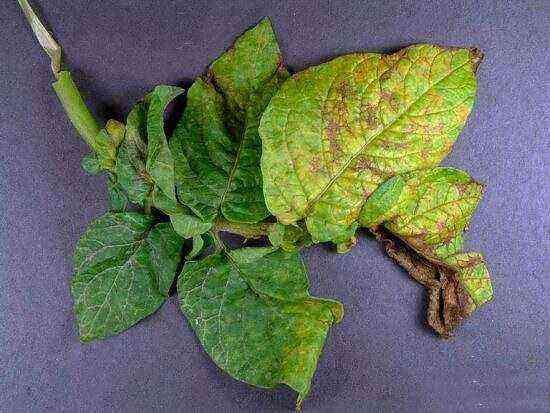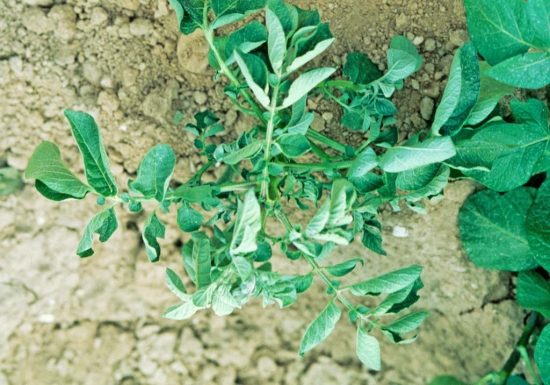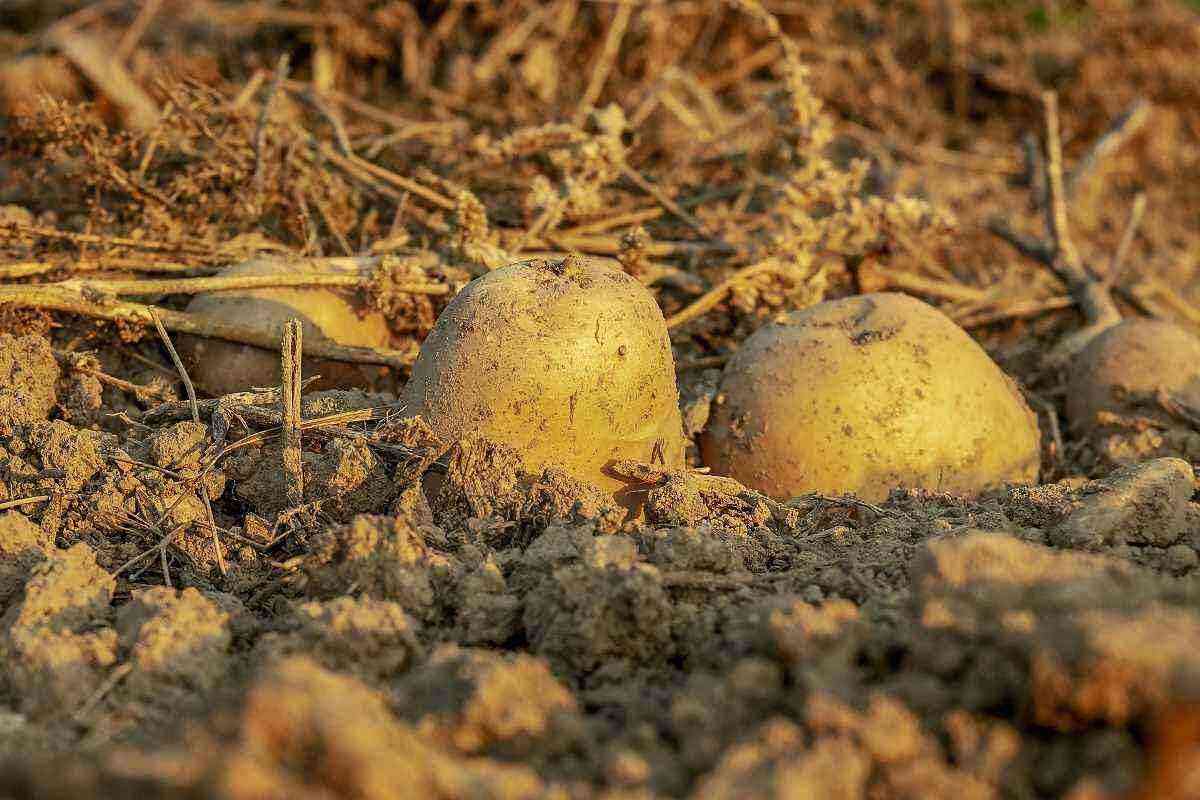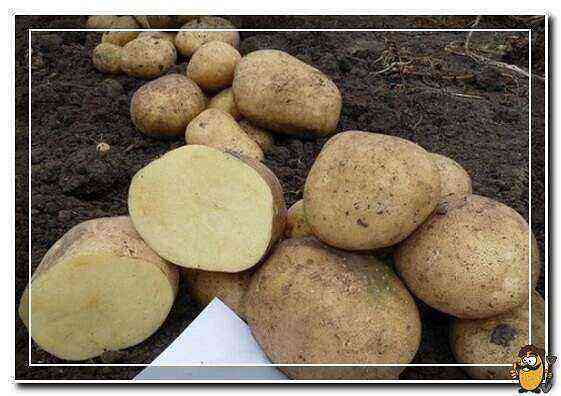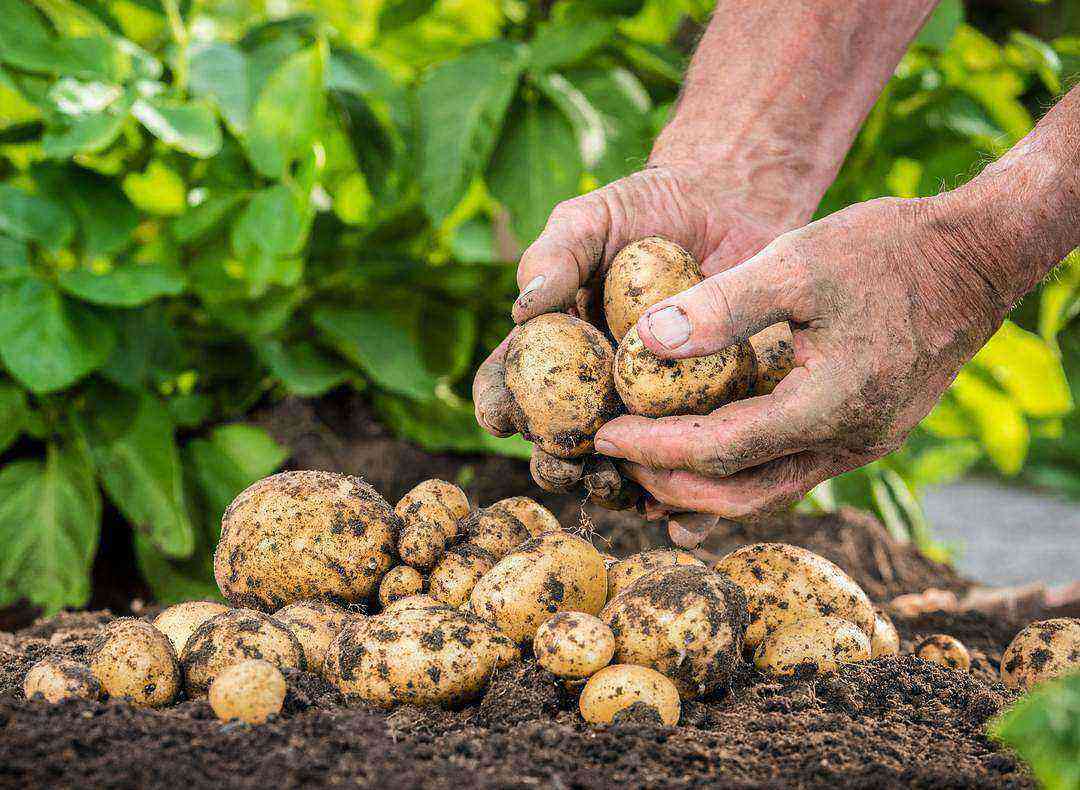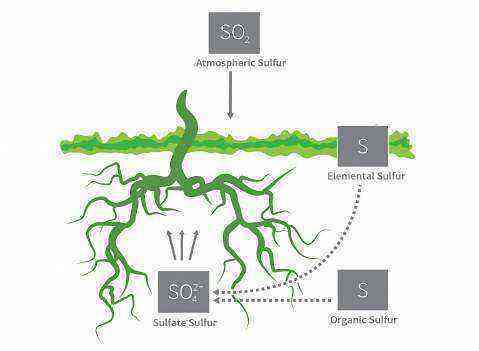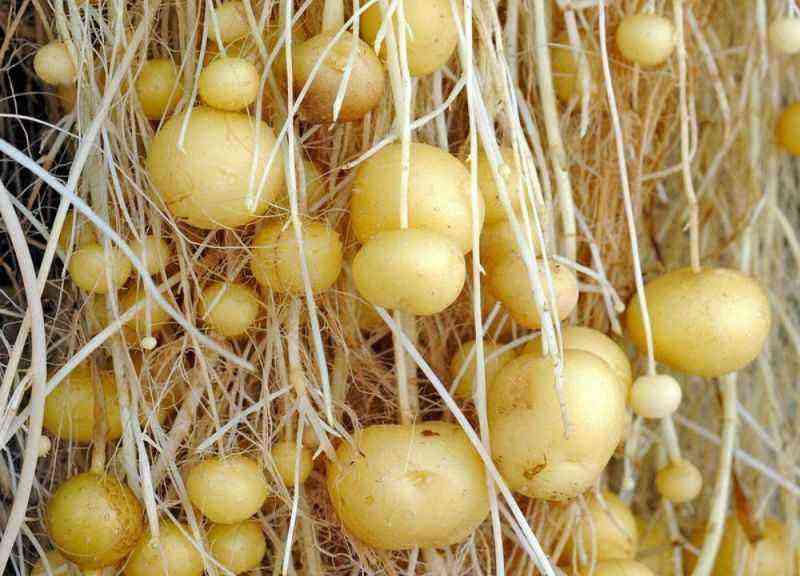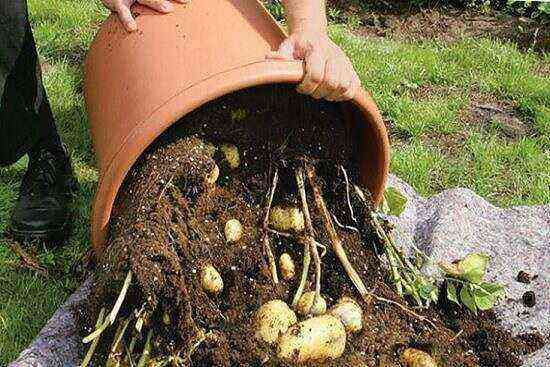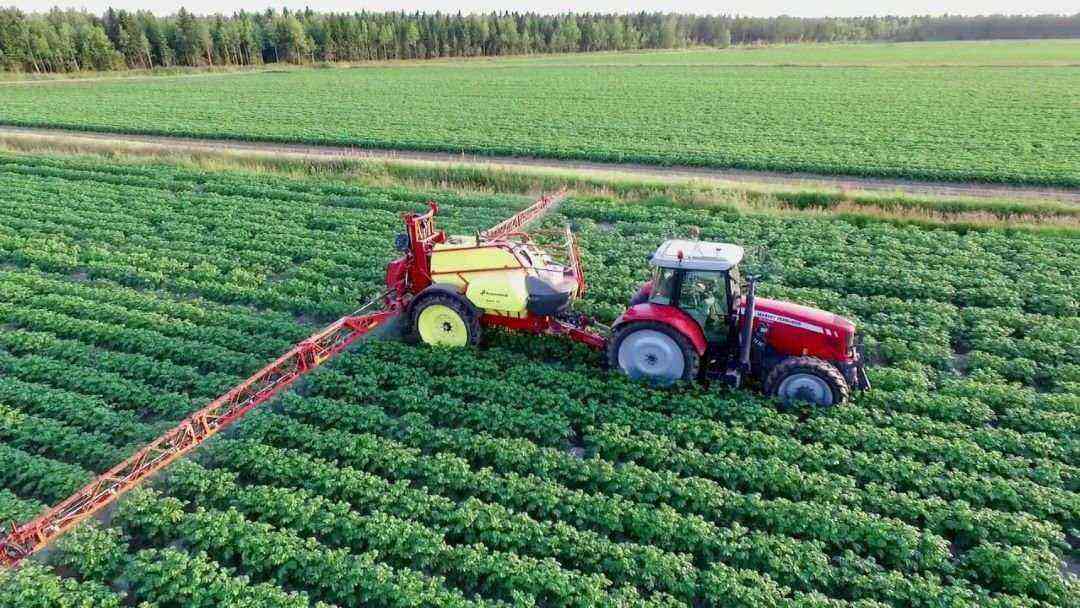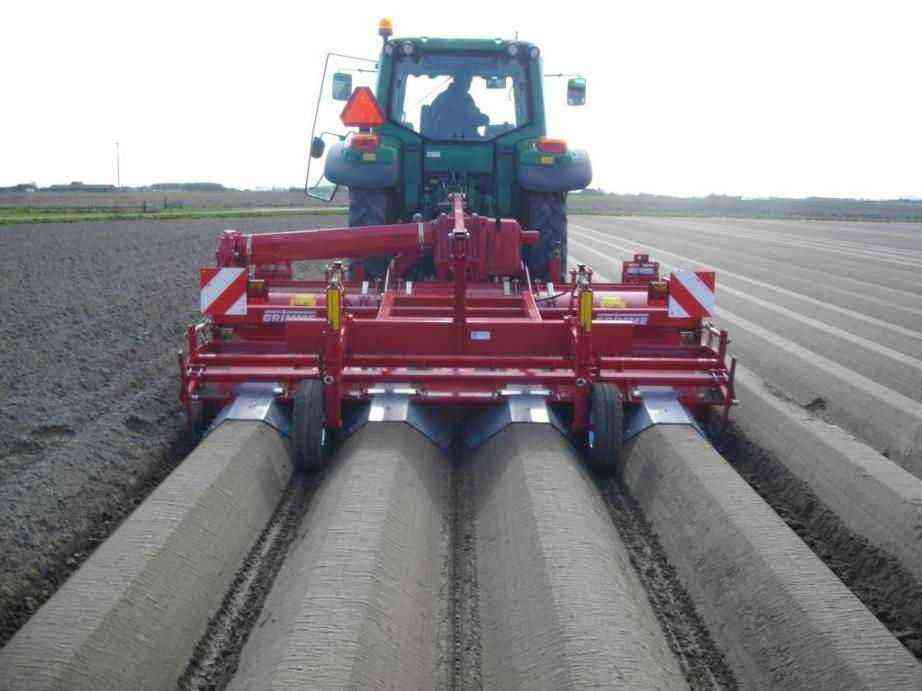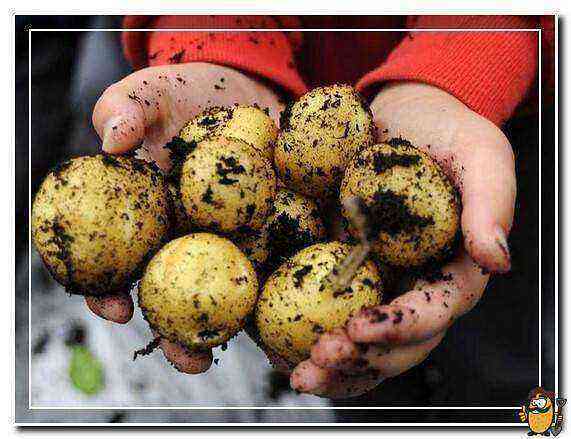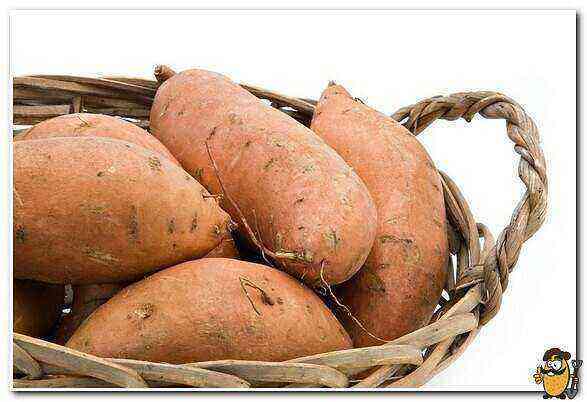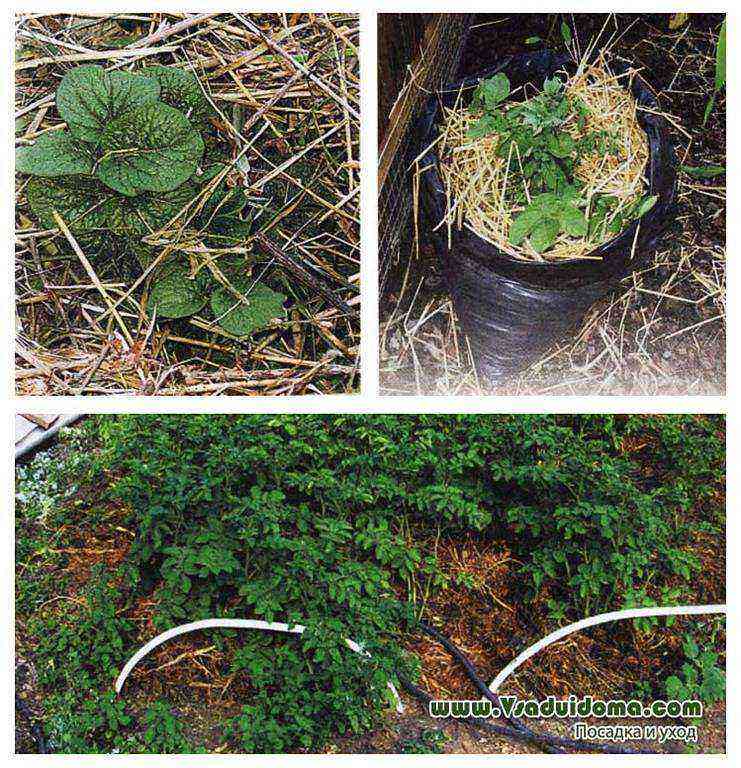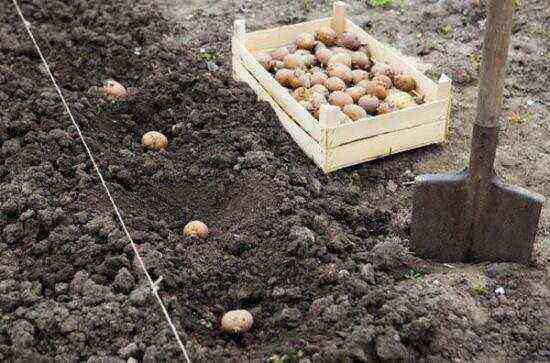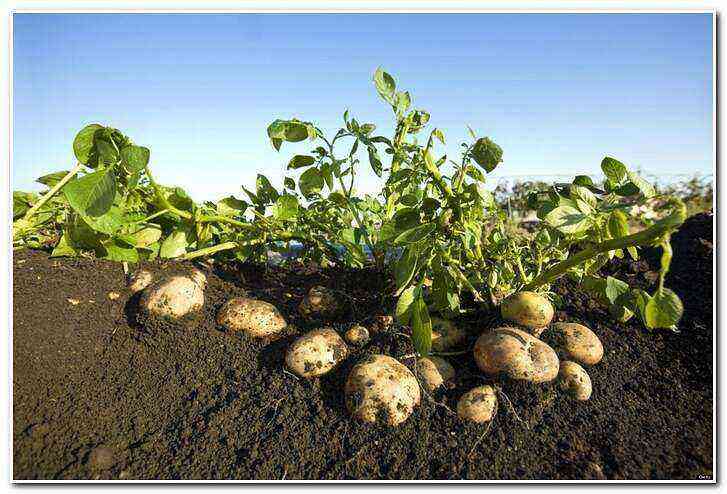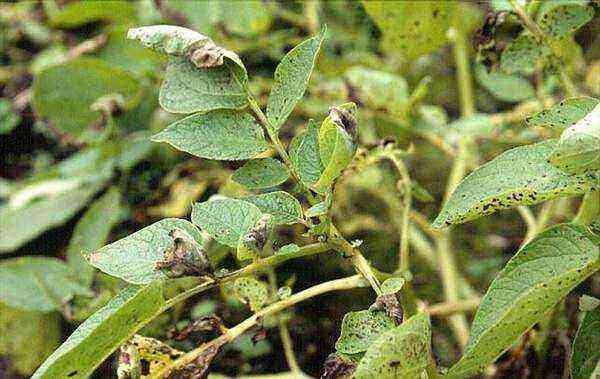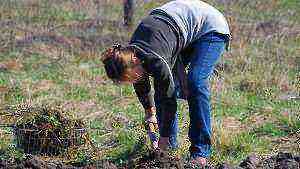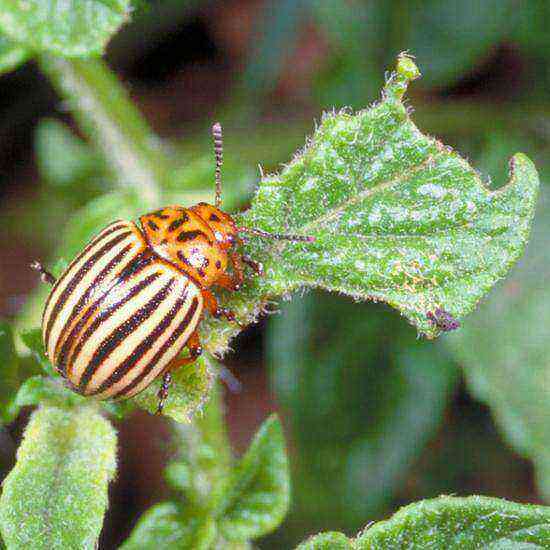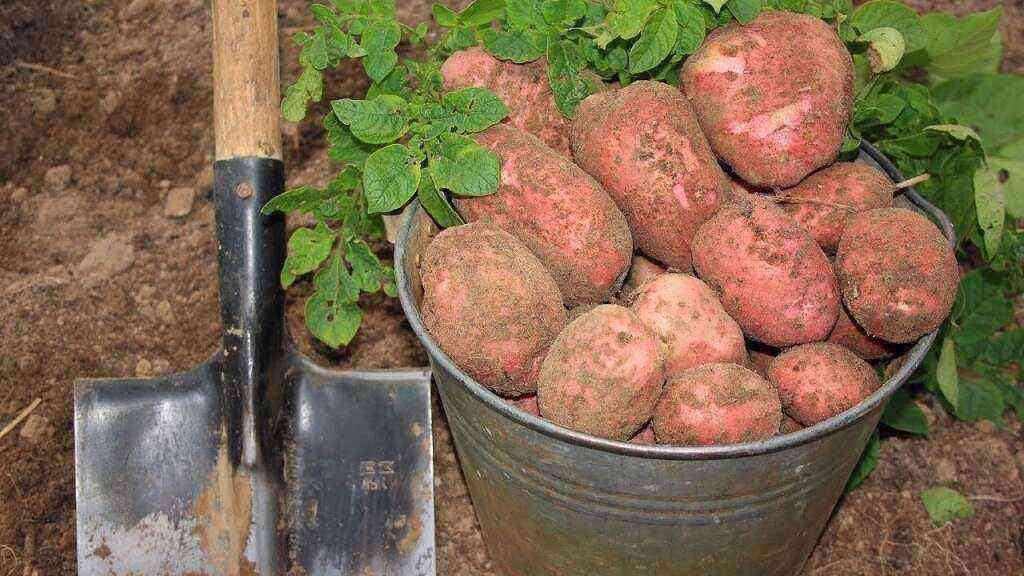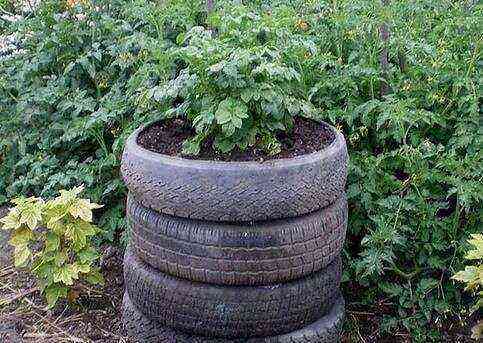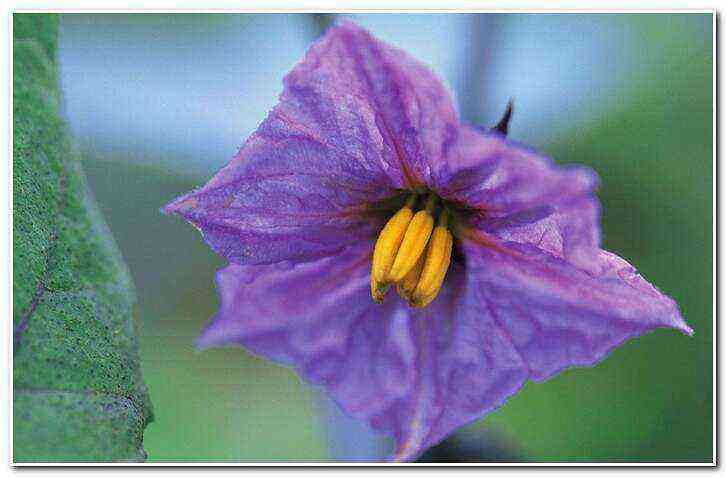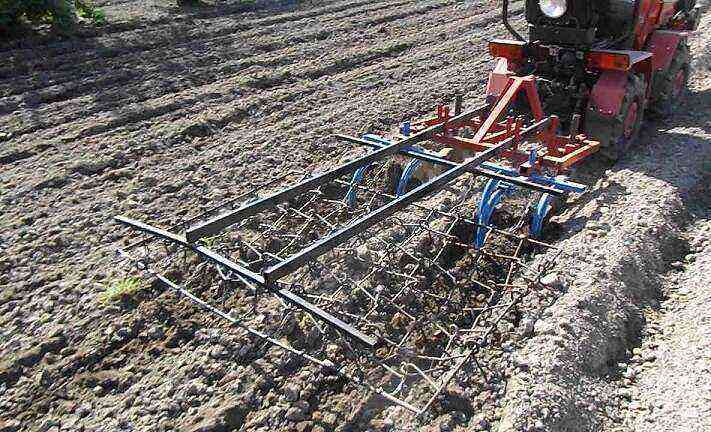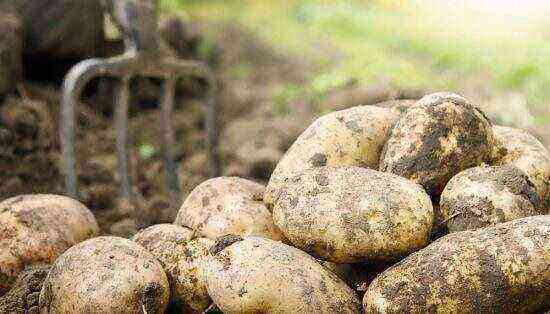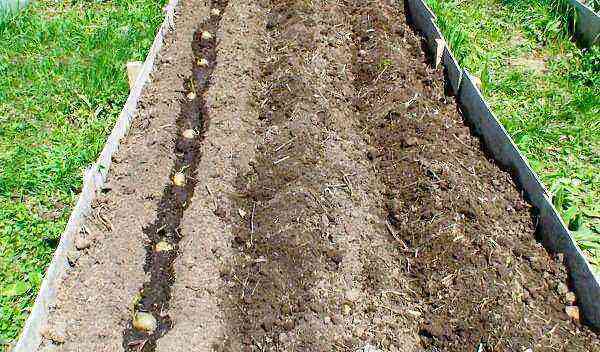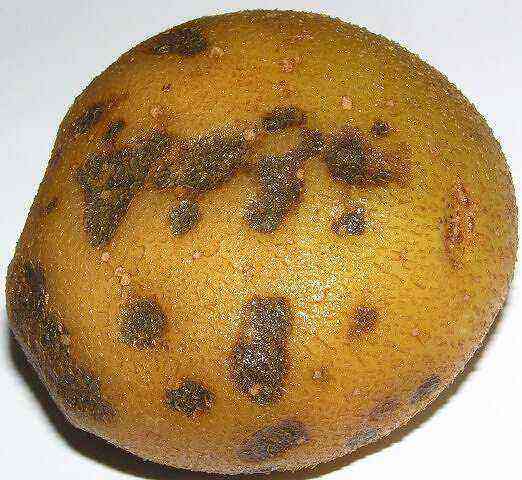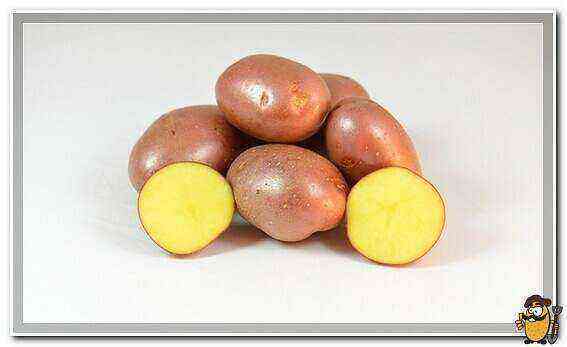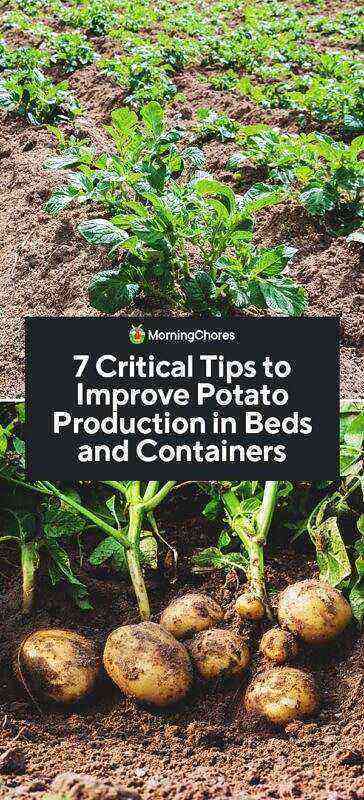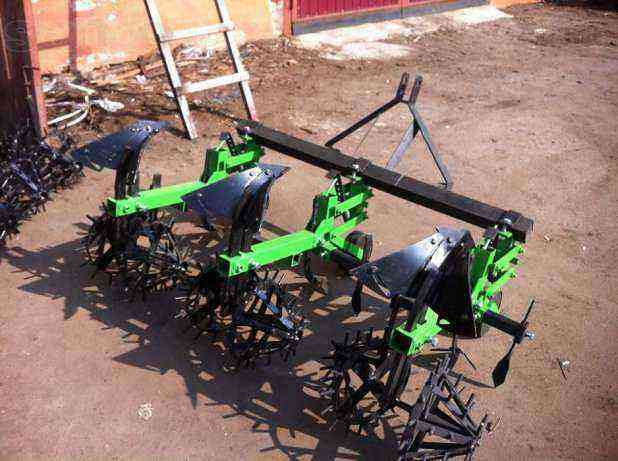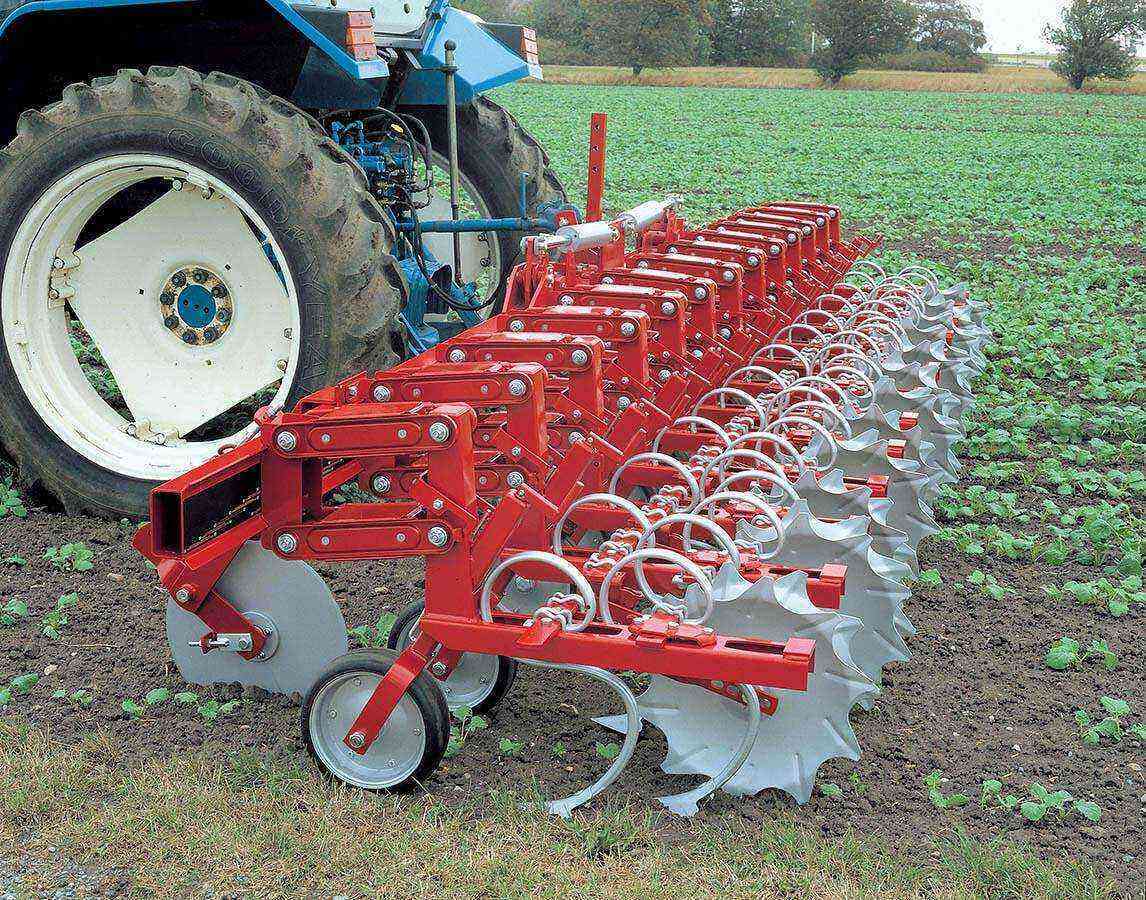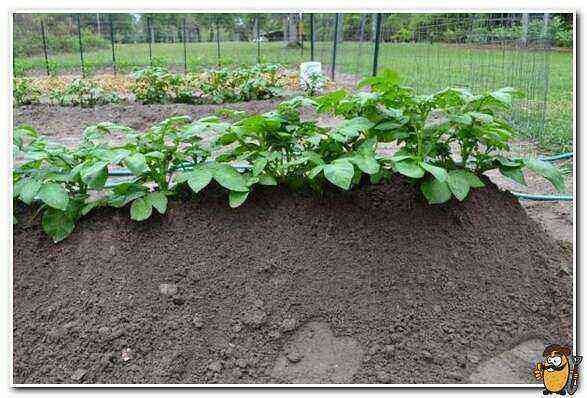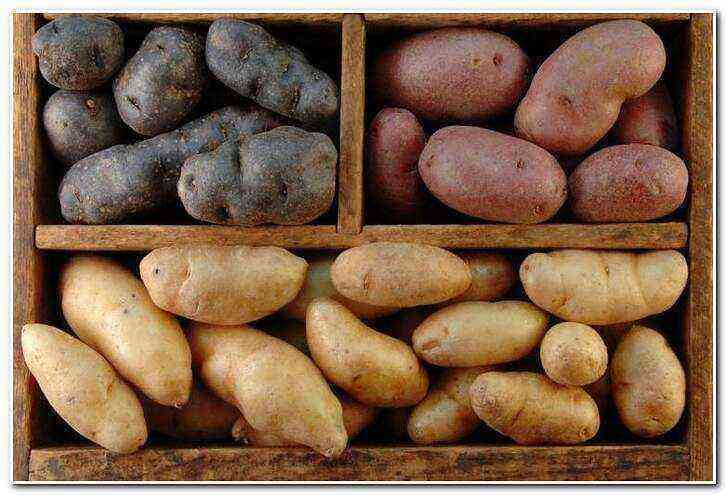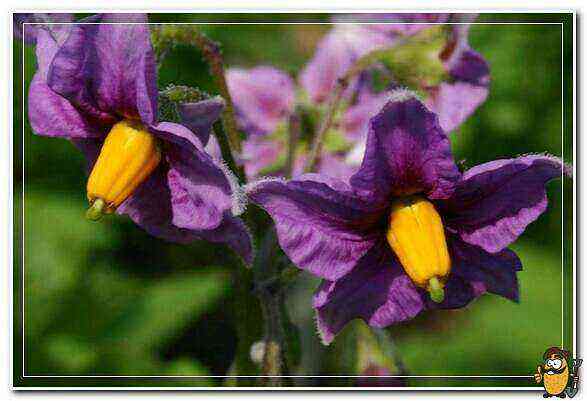If potato curl is present, then the first thing to do is to identify the reasons for this and choose control measures. Treatment options will vary from case to case. You can rely on the feedback from experienced farmers in this matter. If prevention and therapy are ignored, crop loss can reach 100%. This is especially painful for those who are involved in the cultivation of crops for sale.
So there is a folding
To understand why the leaves began to curl, you need to pay attention to the accompanying symptoms. It is usually pronounced. Conditionally, the factors that can provoke a problem can be divided into two groups: improper plant care and disease. Both cases are equally dangerous and can lead to serious consequences.
Exposure to herbicides
Potatoes are a plant that is hypersensitive to herbicides. Damage occurs in two cases: the farmer started spraying late on the plants or the chemicals were blown by the wind from neighboring beds. Signs of herbicide damage to potatoes include leaf folding, the presence of overly pronounced veins, necrosis and growth retardation. Root crops are small and ugly with mechanical damage. Therefore, it is impossible to apply herbicides on seed crops.
Attention!
Herbicides must be used in the fall, when preparing the soil for future planting, but not during the growing season of the plant.
Mosaic
Mosaic is a common potato disease. There are such varieties of it:
- Plain and folded. The defeat of young leaves is the first sign of the disease. Its presence is indicated by irregular light green mottling. Over time, many varieties develop dark brown spots in the area of this speck. Transmission of infection occurs when diseased leaves touch healthy potatoes. Often, the infection is spread by aphids. Infection can occur through mechanical damage caused by work equipment during the maintenance of the crop. The main features of a folded mosaic include the curvature of the particles of the leaf plates. Folds form along their edges, swellings appear between the veins. Initially, the leaves brighten, and over time they become bronze. You can verify this by looking at the photos of the affected plants. The yield loss reaches 40%.
- Mosaic curling of leaves. During the period when the first buds appear, the edges of the upper leaves become wavy and rise. At the same time, the sheet itself becomes like a spoon, but remains soft. Old leaves look healthy. Crop loss can be up to 70%.
- Speckled. With it, a mottling of a light green color appears on the leaves of the plant (in some varieties, dark necrotic spots are formed). The nature of the course of the disease largely depends on the growing conditions of the culture. Sometimes it runs latently. Then the diagnosis by external symptoms becomes more difficult.
- Wrinkled. At first, the symptoms of the disease are erased. At the beginning of the growing season, leaf tissue grows disproportionately, bumps and folds are formed between the veins. The edges of the sheet plates are bent down. Sick cells do not have the strength to retain moisture, so the affected plants are the first to die in drought. Infected seed germinates and forms weak tops that die off 4 weeks ahead of schedule, leaving little fruit. The yield loss is 90%.
- Striped mosaic. In this case, pronounced longitudinal stripes are formed on the upper tops of the potato. At the same time, it decreases and becomes rough. The disease also affects the tubers of the plant. As a result, they become fusiform. The roots themselves lose their taste, and the yield drops. The result of the development of this disease is the death of the bushes.
Rhizoctonia (black scab)
Initially, with rhizoctonia, the leaves on the potato become curly, and ulcers appear on them over time. Dust forms in the place of the core. Root crops are left without nutrients. In this case, the yield is reduced by 30%. Poor soil can make the problem worse. At harvest time, most of the root crops will be underdeveloped. During dry periods, diseased plants almost never survive.
Attention!
The causative agent of rhizoctonia is a pathogenic fungus. It was first identified more than 100 years ago.
Violation of the rules of care
It is believed that the use of manure or compost can completely solve the problem of soil fertility. However, it is not. Deficiency of phosphorus and potassium can also provoke the appearance of curly leaves. In addition, the culture may stop growing and developing with insufficient lighting, improper watering. In this case, the leaf plates will curl and turn pale, and photosynthesis will stop. As a result, the tubers will not form, and the yield will be halved.
Ways to solve the problem
Measures to combat potato curl will directly depend on what factors led to it. If the problem is caused by herbicides, nothing can be done. The more the drug gets on the plant and soil, the greater the yield loss is to be expected. If the herbicides were carried by the wind from an industrial field or were sprayed from a helicopter, then the yield is likely to be halved or the plants will die completely.
If the leaves began to curl due to improper care, the situation can be easily corrected. With waterlogged soil, deep cultivation of the area between the beds is necessary. If the lower leaves have begun to rot, they must be removed. Otherwise, the rot will spread upward. In a drought, it is useful to mulch with hay. This will keep moisture in.
Sick plants need to be dug up to prevent an epidemic. It is too late to treat them. It is recommended to burn infected bushes. The pit should be watered with a solution of potassium permanganate. Weeds must be removed and pests must be destroyed. It is recommended to use uninfected seed for the next year. To be sure of its quality, it is recommended to purchase it in the nursery.
Prevention
To prevent potato tops from curling, you can use Prestige. It effectively protects the crop from all kinds of diseases (including rhizoctonia) and pests (including Colorado potato beetles). They need to spray the plantings in August, before the harvest begins. You can also use the product before planting potatoes.
Attention!
To prevent the leaves from curling, you need to monitor the acidity of the soil. It should vary around pH 5,0–5,5. Changes in either direction lead to the fact that the plant becomes weak.
Here’s what else you can do to prevent curly potato leaves:
- Buy seed only from reliable suppliers. When using your own seeds, you should choose medium-sized root vegetables, as they are more disease resistant.
- Do not cut the root vegetables, as this can lead to infection. If there is a shortage of planting material, you need to disinfect the knife and hands with vodka before cutting. Then it is advisable to sprinkle the cuts with crushed activated carbon or grease with brilliant green. The latter must be diluted in half with water before starting to process it.
- Do not use tubers with broken shoots as seed, as the pathogen can penetrate through the damage.
- Seed material must be stored correctly: do not freeze and get wet.
- Adhere to the rules of crop rotation. You cannot plant potatoes after nightshades. Otherwise, it will be amazed by the pathogenic flora accumulated in the soil.
- Carry out sideering before planting potatoes. This should be done either in the fall or in the spring. Beans effectively saturate the soil with nitrogen, and cereals heal the soil and help get rid of the wireworm.
- Plants must be spilled. Young fruits should lie at a depth of 5-10 cm.
- Fight ants near potato beds. They spread aphids, which are carriers of infections.
- Maintain soil fertility, apply various fertilizers.
- Remove weeds regularly. They obscure the culture, causing it to weaken. In addition, aphids nest on weeds – a carrier of infection.
Reviews
Victor
Over the years, the problem of potato curl has arisen. Fertilizing and spraying with chemicals did not give results. Moreover, every year the problem became more and more aggravated. The year before last, we bought new seed material from the nursery and sprayed it with “Maxim” before planting. After that, the problem did not return.
Olga
For the entire period that I have been engaged in agriculture, I first encountered potato curl 5 years ago. The disease could not be eliminated either by folk or any other methods. The problem was present until at one of the forums I learned about the existence of a disease-resistant potato variety Vector. As soon as I switched to it, the problem disappeared.
Conclusion
Curly leaves in potatoes can occur as a result of various factors, however, most often this is non-observance of the rules of agricultural technology. Most farmers neglect the rule of crop rotation, do not process root crops before planting. Many infections are stored in the ground for years, remain on root crops, and are carried by insects. The impetus for the development of the disease is usually unfavorable weather conditions. During heat or dampness, the pathogen begins to multiply actively. In doing so, it absorbs nutrients from the leaves, causing them to curl.
